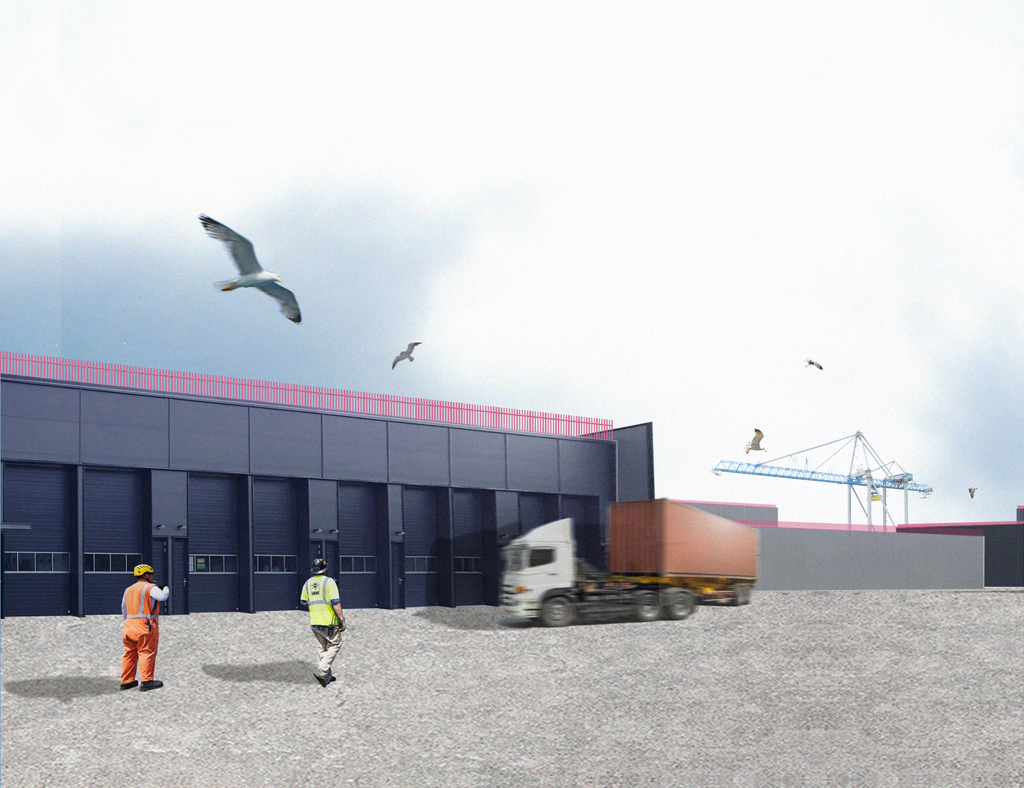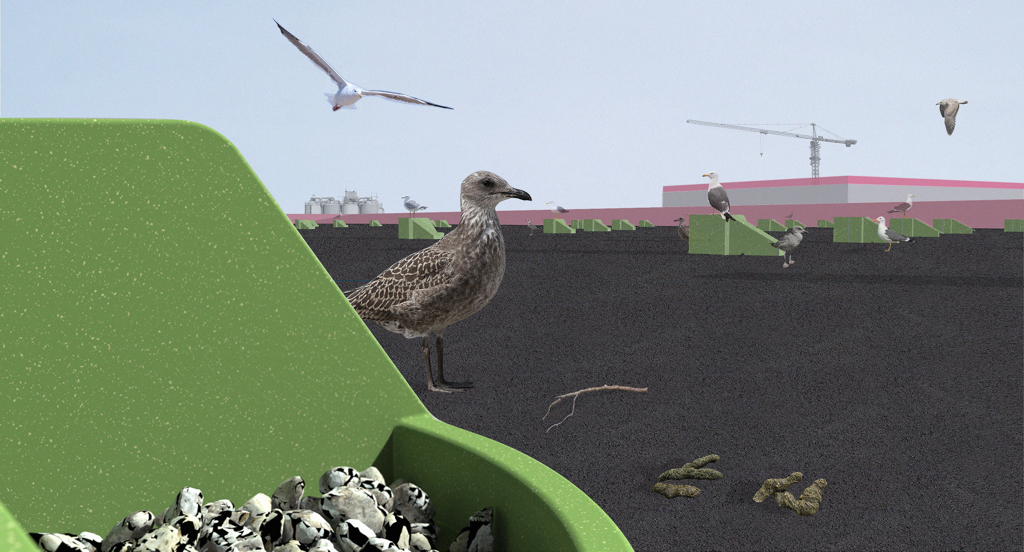Joanna van der Leun
This project is an example of what happens if a design project is started from the perspective of another species. In this case, the Lesser Black-backed Gull. When viewed from this unique perspective, it reveals our entanglements, and the (unintentional) impact we as humans have when we make an adjustment in our shared environment. These valuable insights give us the opportunity to design sustainable co-existence, and environments accordingly.
“Only by taking non-human perspectives, we can design sustainable co-existence”
Gulls populations are increasingly moving towards city environments. Part of these numbers are coming from the Port of Rotterdam, the largest port in Europe. The largest colony of Lesser Black-backed Gulls in the world (up to 30,000 breeding pairs per year) is located here. Various affordances, while being a species of routines, make it a meaningful place for the gulls. Port owners and municipalities are trying to work around the protected status of the species by applying for exemptions. These exemptions, along with human-induced changes in the environment of the port, are both causing them to disperse in unpredictable ways, and are causing the population to decline. This could potentially threat Natura2000 objectives.
But ultimately, humans are the driving factor, so the solution will also lie in taking a gulls’ perspective and studying their response to our entanglements while learning to live alongside them.
The intervention is called “Land van Meeuw en Mens” and should ensure that gulls are taken into account in the world we design while highlighting their acknowledged agency to employees and visitors.
The “Land van Meeuw en Mens” consists first of a spatial transformation of an area where gulls and humans are crossing paths. The second part consists of a design proposal for gull roofs that are currently arising from the popular breeding area, but do not yet take into account the loss of habitat for this species. This last proposal includes a breeding object that has been further developed to translate the affordances of their previous nesting site to the roof.
The final designed intervention contributes to sustainable co-habitation in the Port of Rotterdam, for both humans and gulls, which can function as an important example for the many industrial areas in the Delta.





